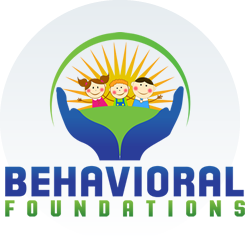 In a post earlier this week on our Facebook page we discussed the differences between reinforcement and bribery, as follows:
In a post earlier this week on our Facebook page we discussed the differences between reinforcement and bribery, as follows:
In short, reinforcement is delivered AFTER the behavior occurs. This clear “first, then” relationship is not only easy for kids to understand, but is more likely to be met with consistency in implementation on the parent’s part and increases the likelihood of this behavior in the future.
Example: Mom explains to Timmy that he can earn a cookie if he is good at the store. Timmy acts appropriately while at the store and receives a cookie when they leave. (First – behave appropriately in the store, Then – cookie)
Bribery is the “promise” of a delivery following a behavior, but is too often is delivered beforehand. Bribery often fails because kids can fail to deliver after a specified period of time, especially without other supports in place. Promises aren’t clear relationships for kids and many forget about their behavioral expectation once already receiving the bribe.
Example: Mom offers Timmy a cookie for being good inside the store. While in the store Timmy eats his cookie and, as time goes on, forgets about the expectations of his behavior and begins acting out.
Another problem with bribes is that they tend to be offered in the midst of an existing problem behavior, which leads to accidental reinforcement of the bad behavior by then gaining access to a promised reward.
Example: In the middle of the store, Timmy begins to act out and is yelling and crying. Mom quickly offers him a cookie if he stops yelling and crying. Timmy complies and receives the cookie. (Timmy is likely to engage in the same behaviors next time at the store in efforts to get a cookie in exchange for being good).
Why Reward At All?
Shouldn’t a person behave because “it’s the right thing to do”, or because it “originates from a sense of conscience”. Of course, but that doesn’t have anything to do with how one’s behavior comes to be under the control of such internal influences and drives.
All people are born with genetic tendencies that are sensitive to both internal drive mechanisms and the environmental contingencies around them. As we grow up we are shaped largely in part by our surroundings through both reinforcement and punishment consequences. Who we become as an adult has a lot to do with the contingencies we come in contact with throughout our lives.
Consider This
A child isn’t born with the skills or the ‘drive’ to clean their room because it makes mom happy. It is through teaching the skills to clean one’s room followed by the delivery of mom’s praise (and perhaps even paired with a tangible reward at first) that strengthens this behavior. Over time the need for a tangible reward and even praise subside as the self gratification takes over as the reinforcer; essentially becoming the inferred internal mechanism that is rewarding the behavior.
For an individual with Autism, many of these environmental contingencies are not experienced naturally. It takes repeated exposure and consistent delivery of more tangible reinforcers to strengthen behaviors, that are then faded to social and more natural reinforcers over time.
The idea of emitting a behavior out of conscience or learning to learn is not a short discussion. What we can say is that teaching behaviors that promote improvement in other non-targeted behaviors is likely to lead to a greater contact of reinforcement contingencies in the natural environment. These pivotal responses helpfacilitate behaviors that are reinforced by one’s environment or inferred internal drives.

 INSURANCE ACCEPTED!
INSURANCE ACCEPTED!